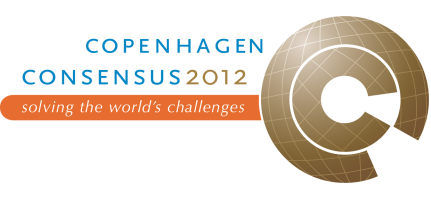Third Copenhagen Consensus: Education Assessment, Ozarem
Assessment Paper
An Assessment Paper on Education has been written by Peter F. Orazem and released by the Copenhagen Consensus Center. The working paper used by the Expert Panel is available for download here, the finalized paper has been published in Global Problems, Smart Solutions - Costs and Benefits by Cambridge University Press.
Two Perspective Papers have also been released, one by George Psacharopoulos, as well as one by Lant Pritchett.
Short summary
Over the past 50 years, remarkable progress has been made ensuring that children receive basic education. More than sixty percent of adults in low-income countries can read and write, whereas in 1962, just one-third were literate. Today, nearly nine-in-ten children globally complete primary school.
However, in education – as in other developmental challenges – progress is uneven. Across sub-Saharan Africa, nearly one-quarter of primary aged children are not in school. In Equatorial Guinea, 46% of children are not being educated. In South Asia, progress has generally been impressive, but 34% of Pakistan’s primary aged children are not in school. The worst educational outcomes occur in the nations that rank among the most poorly governed.
Peter Orazem highlights the different ways that decision-makers could approach the challenge of providing education in developing countries. As most children in developing countries are already enrolled in school for at least some period of time, Peter Orazem points out that arguably we should focus on strategies to enhance the learning that occurs in school or increase the number of years of schooling – or in other words, improve school quality.
Yet, knowledge of which inputs actually generate quality schooling outcomes is very weak, and many additional investments are unlikely to generate the desired effects. There is widespread acknowledgement that resources are used inefficiently, but for instance efforts to improve resource management by devolving authority to local jurisdictions are as likely to fail as succeed.
Thus, Peter Orazem considers three other strategies that seem to offer the best evidence of success to date; nutrition supplements, offering information on returns to schooling, and conditional cash transfers for school attendance. All have been shown to succeed with benefits that exceed costs.
It may seem surprising to focus on nutrition to achieve better schooling, but malnourished children learn poorly. Insuring proper nutrition at the time when brain development is occurring, significantly increases the returns to schooling. Not surprisingly, micro-nutrient interventions and deworming strategies will be most effective where those problems are most severe, such as in South Asia and Sub-Saharan Africa. Those interventions also tend to have the largest benefits relative to costs. The benefits are not just educational but will increase health and the child’s physical abilities. Provision of nutrient supplements and antiparasitic medicines is very inexpensive. In Kenya the cost of deworming a child can be as low as $3.50, with benefits 20-50 times higher.
Increasing years of schooling simply by providing accurate information on the returns to schooling is another promising and relatively inexpensive intervention. Many kids and parents, especially in rural areas, are simply unaware of the long-term benefits that may come from a better education. In Madagascar for instance, providing children and their parents with accurate information on the value of schooling can be achieved at a cost of $2.30 per child, resulting in total benefits of possibly 600 times the cost. Although the costs vary across countries, such an intervention could conceivably be built into the standard curriculum at relatively low cost and has the potential of increasing academic effort while in school as well as increasing years of schooling. However, because of the very few studies, the benefits from a large-scale information campaign is less certain.
Finally, Orazem argues that the most consistent evidence of success in recent years comes from making payments to underprivileged parents conditional on their children attending school.
These programs – known as conditional cash transfers – have consistently increased child attendance, even when the transfer is modest. Program administration costs have been lower than those of other social interventions. In addition to positive schooling outcomes, these transfers have lowered the poverty rate, improved the nutritional status of poor households, and have increased the proportion of children receiving vaccinations and other health services. While there is great variance in performance, a dollar spent on such programs on average produce benefits of about $9.
Because the programs increase the intensity of child investment in school as well as child time in school, they help to break the cycle of poverty whereby poor parents underinvest in their children’s schooling and doom their children to poverty. By increasing child attendance, Orazem argues, we should even see an increase in teacher attendance which will increase the quality of schooling offered to the poorest children.
Yet, cash transfers programs are much more expensive than nutrition or health interventions. That might explain why cash transfer programs are concentrated in wealthier countries while nutrition programs typically focus on the poorest countries. In fact, conditional transfer programs require at least some minimum level of development to be feasible because they require a large enough population of the relatively well-off to subsidize those at the bottom of the income distribution. If the entire population is poor, redistribution is impossible.
In general, the climate for all of these interventions is better in economies with strong returns to schooling than in those where returns to schooling are depressed by poor government institutions. Therefore, the best places to try these interventions are countries that protect individual economic and political freedoms. Of course those countries would also have the better capacity to implement an intervention, whether distributing medication, transfer payments, or information on the returns to schooling.

